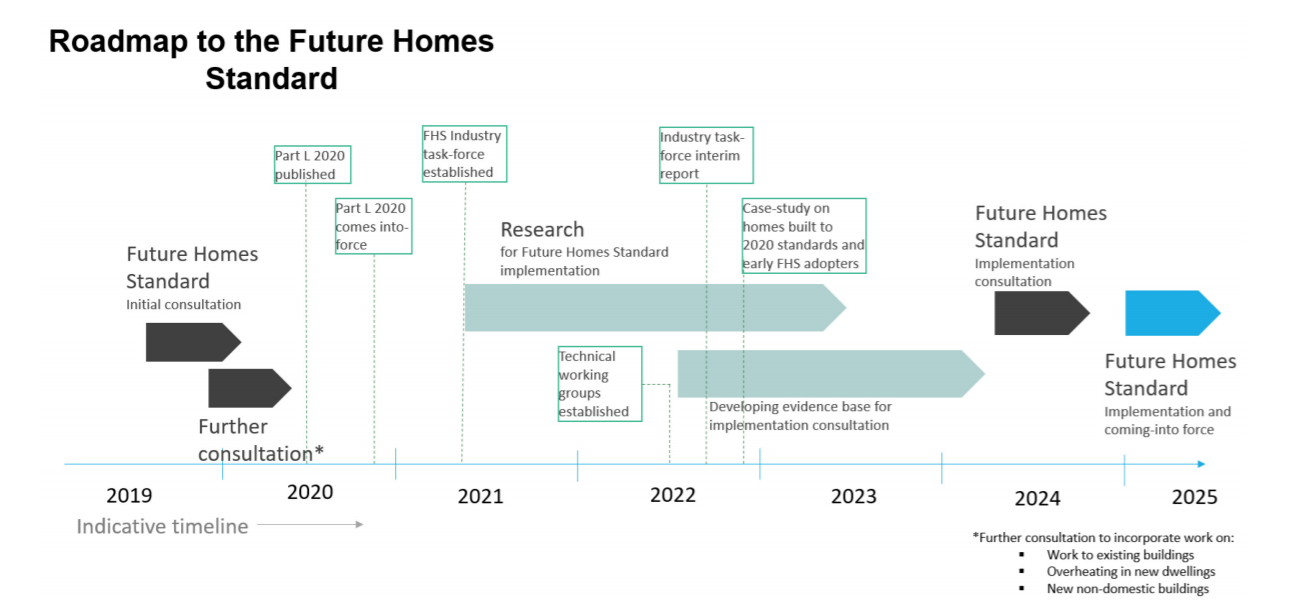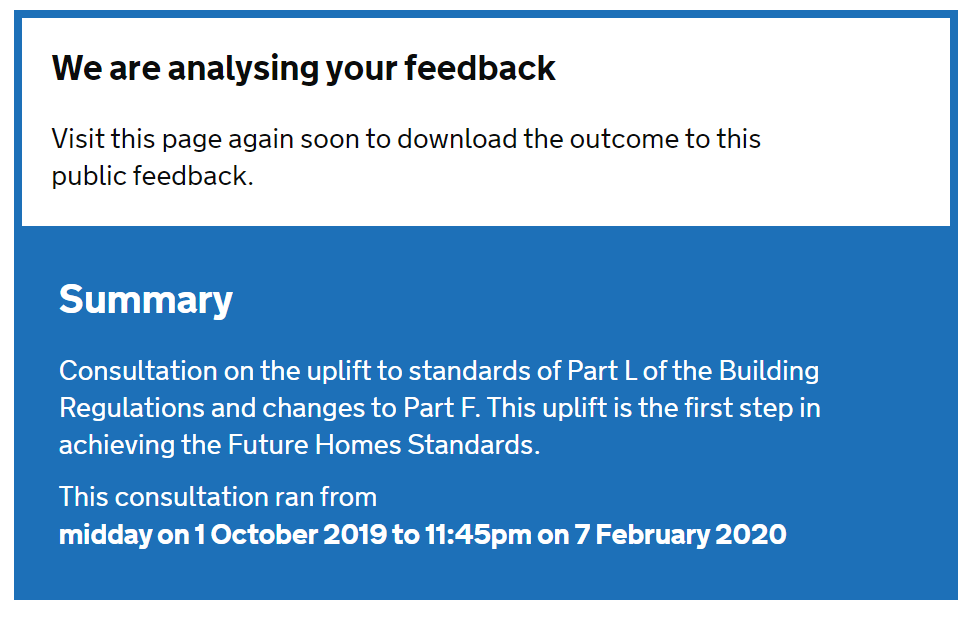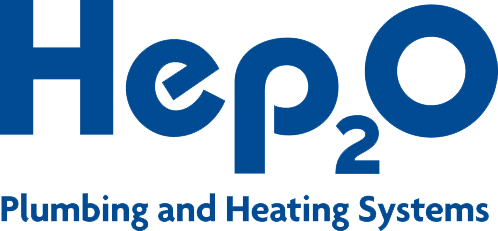Back
How will the push for net zero affect fenestration?

In June 2019, Britain became the world’s first major economy to commit to going net zero by 2050 – and now that extremely ambitious target has been enshrined in law, policy-makers are pondering how to translate talk into action.
If we’re going to cut almost all of the country’s carbon emissions in the space of just thirty years, it’s going to take a radical shift in the way we live, work, and do business.
In construction, the pace of change will need to be particularly swift. UK homes don’t just account for 20% of our total emissions, but they’re far easier to cut than those produced by aviation, agriculture and other industries, meaning the reductions will have to be even bigger to compensate.
It’s for that reason that the government will implement a new Future Homes Standard (FHS) – a new standard of house-building that seeks to shrink the carbon emissions of the average British home by between 75-80%.
A new FHS-compliant home will need to incorporate energy-efficient heating systems, like ground-source heat pumps as an alternative to gas boilers.
And crucially for UK fenestration, the fabric of the building will need to be much more thermally efficient, involving the use of extremely high-performance glazing products.
It’s possible this could lead to increased use of triple-glazing, and ‘clever’ high-performance double-glazing.
Roadmap to the Future Homes Standard
The Future Homes Standard will obviously represent a major leap in the required levels of thermal performance – and to help smooth the transition, the government will amend Part L (covering the conservation of duel and power) and Part F (covering ventilation) of the Building Regulations before the Standard comes into force.
Earlier this year, the government held a consultation to help inform these changes to Building Regulations, involving parties like the Glass and Glazing Federation (GGF) and National House Building Council (NHBC)
In October, they’ll publish a document that will provide guidance on making improvements to energy efficiency in new-build as a stepping stone to the FHS, which will come into force in 2025.
The diagram below shows the government’s proposed roadmap to the Future Homes Standard.

What does the Future Homes Standard mean for UK glass and glazing?
The government’s consultation exercise asked organisations all across UK construction to give their view on what the Future Homes Standard should look like.
The GGF responded by recommending that windows in new-builds are required to offer U Values 0.8 by 2025, with a 1.6 target for 2020 acting as a stepping-stone.
If the government goes on to accept those recommendations, it’ll be a huge shift for fenestration, and one that’ll require major changes to the way the sector operates.
But given our inability to produce triple-glazed versions of popular window styles like sash windows, it seems likely that high-performing, ‘clever’ doubles will be the way forward.
Poor installations
However, it’s not just the window products we use that require attention – it’s how we install them, too.
In recent decades, there’s been a major improvement in the thermal efficiency modern window and door products can offer.
However, a recent study by the National Energy Foundation (NEF) found that large numbers of British windows frequently aren’t installed correctly, leading to issues with poor quality ceiling junctions.
In these cases, the U Values and Window Energy Ratings the window product itself can technically offer become irrelevant – no matter the quality of the window, if it’s not been properly installed it’ll only offer poor thermal performance.
Big house builders are known for cutting corners, and the proposed changes to Document L, therefore, need to require inspectors to take heat loss photos of buildings post-installation to ensure compliance.
Varying targets between England and Wales
Another challenge is that England and Wales have different targets for carbon emissions. The Welsh Assembly has committed to cutting CO2 emissions by 90%, whereas the English target is for a 75-80% reduction. There are similar issues with regards to varying U Value targets with Wales proposing a backstop of 1.4 and England 1.6.
In an attempt to tackle this, the GGF has proposed that both England and Wales aim for a 1.6 U Value target from 2020.
What about replacement windows?
So far, the government has been mainly concerned with improving energy efficiency in new-build properties.
However, four out of five of the properties people will be living in by 2050 have already been built – and that means retrofitting will have to play a major role if Britain is going to achieve its net zero ambitions.
The scale of the challenge is enormous. The energy efficiency of the average British home can be up to three times worse than that of properties in other European countries like Norway and Germany.
According to a 2015 survey by the Department for Communities and Local Government, 20% of Britain’s houses were built before 1919, and 30% were built before the Second World War.
Tens of millions of windows will need to be replaced with higher-performing alternatives over the next three decades as a result, and we’ll inevitably see further legislation on this in the coming years.
We’ll also likely see legislation making some exceptions for heritage buildings.
Selling the benefits of better energy efficiency
One possible obstacle to retrofitting Britain’s housing stock is a reluctance on the part of homeowners to invest in replacement windows.
Recent FENSA figures demonstrate a decline in the number of window replacements in the UK. It seems likely that with Brexit agreed, consumer confidence will improve in 2020 – although at this stage it’s hard to tell how much impact coronavirus will have.
As an industry, we need to try and combat this by selling the long-term benefits of greater thermal efficiency – which over time will far outweigh any difference in cost between an averagely-performing window and a high-performance one.
Let us help you sell the benefits
How the Future Homes Initiative will affect Part F
While much of the government’s focus has been on Part L, they’ve also proposed a number of changes for Part F, which governs ventilation.
They’re calling for the amount of ventilation in new homes to be effectively doubled to help reach net zero by 2050.
There are various ways this could be achieved. The provision of mechanical heat recovery systems is one, along with increased ventilation through trickle vents which proved a hot topic at the GGF members meeting on the 7th January.
However, the government’s proposals focus on whole building ventilation, and the GGF have raised concerns as to whether this is the right approach, given UK homeowners increasingly strive for open plan living arrangements.
For example, a whole house calculation may deliver a total External Quality Assessment (EQA) that may not be located near contaminant sources such as kitchen areas. Arguably, it would make more sense to use mechanical ventilation systems here to move warm air to other parts of the building.
The GGF members also debated whether some of the proposed ventilation changes were really a shortcut in trying to achieve Passive House standards on the cheap by adding more window vents.
It begs the question – why would you want to take a highly efficient window and put more holes in it when heat recovery systems can be far more effective at providing ventilation?
What next?
At the moment, the exact shape both revised Building Regulations and the new Future Homes Standard will take is still up in the air.
The new version of Document L is due to come into force in October 2020, but the government says it’s still analysing feedback from the consultation.
Until that final legislation is passed, we won’t know exactly how it’ll affect fenestration and UK construction more generally – but given that U Values as low as 0.8 are likely to be the default requirement for new-build by 2025, there are clearly drastic changes ahead.

For more information, get in contact here or call 01934 808132.
This entry was posted in Energy Efficiency, Legislation and Regulations





